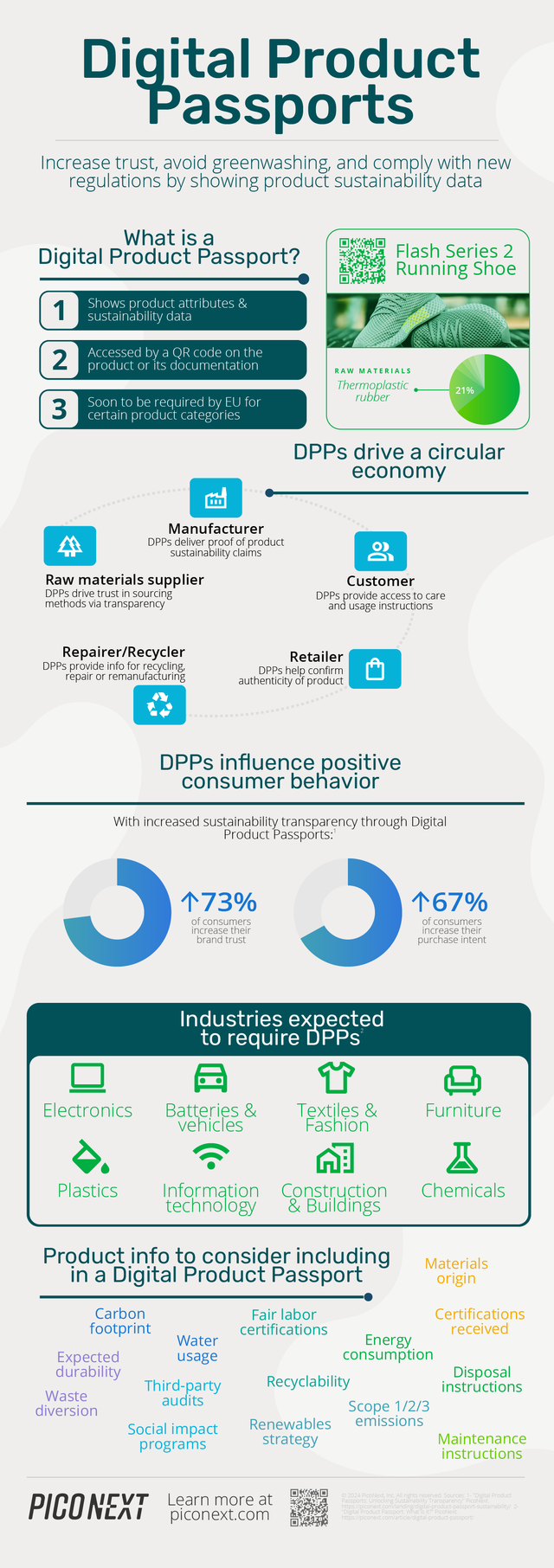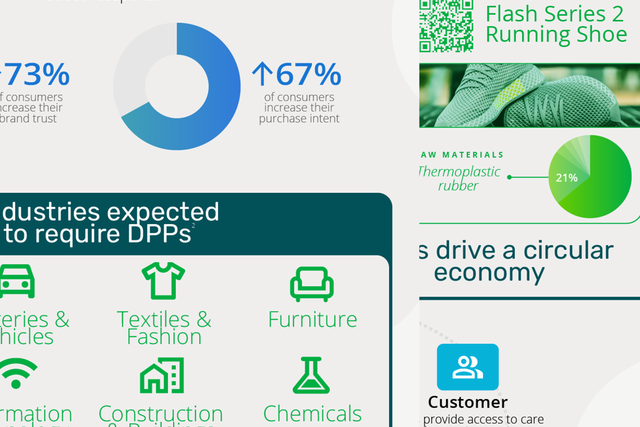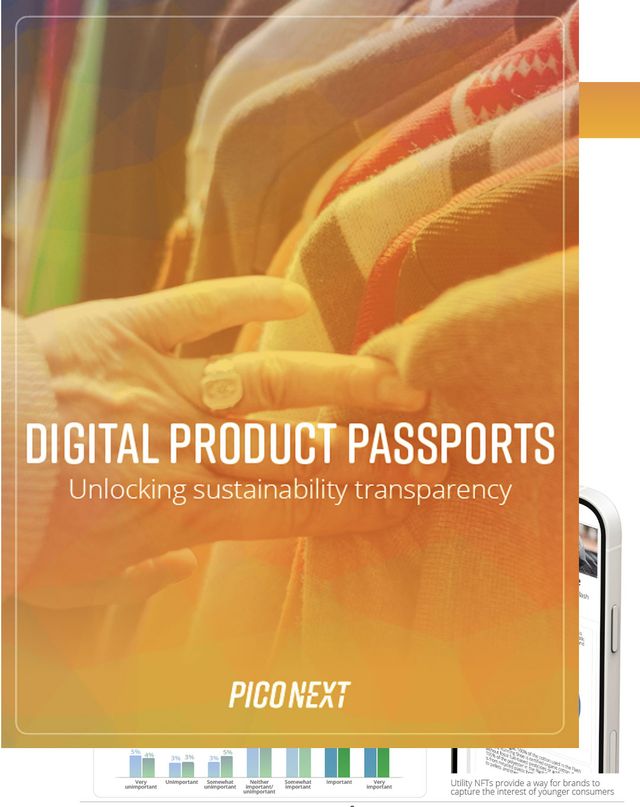We've created a new visual overview of some of the requirements, as well as some of the benefits for companies that create an EU Digital Product Passport to surface their product-level sustainability data and engage their customers with deeper supply chain data.
As EU regulations continue to evolve, companies will continue to iterate and evolve their EU Digital Product Passports to include data that proves their sustainability claims and offers consumers greater insight into the origin of their product materials, details about how products were manufactured, insight into social impact programmes, and data on the environmental impacts of their efforts.
In the visual overview for EU Digital Product Passports below, we take a look at a few different aspects of creating DPPs, including:
What is an EU Digital Product Passport?
An EU Digital Product Passport accomplishes several goals in order to drive greater transparency with sustainability and improved customer trust. Not only does an EU Digital Product Passport show product attributes and sustainability data, but it is also accessed by a QR code (or other data carrier) directly on the product or its documentation. An EU Digital Product Passport is soon to be required by the EU for certain product categories. If a required product does not contain the necessary EU Digital Product Passport, it will incur a penalty that is "effective, proportionate and dissuasive".
How does an EU Digital Product Passport drive a circular economy?
A circular economy is the opposite of a linear economy. In a circular economy, products are reused, recycled, and remanufactured - extending their lifetime. In contrast, products in a linear economy follow a straight line from production, to use, and then disposal. An EU Digital Product Passport facilitates a circular economy, and offers benefits to stakeholders across the value chain, including:
- For Raw materials suppliers, Digital Product Passports drive trust in sourcing methods via transparency
- For Manufacturers, DPPs deliver proof of product sustainability claims to customers
- For Retailers, EU Digital Product Passports help confirm authenticity of product offered to customers
- For Customers themselves, DPPs provide access to care and usage instructions
- Finally, for Repairers or Recyclers, Digital Product Passports provide info about sorting or remanufacturing
How does an EU Digital Product Passport influence consumer behaviour?
In late 2023, we surveyed over 1000 consumers in the EU and US on their attitudes towards Digital Product Passports and transparency in sustainability. Our research revealed that 73 percent of consumers indicate they would have increased trust in a brand when presented with a Digital Product Passport with product sustainability information. 67 percent of consumers indicated they would be more likely to purchase a product with a Digital Product Passport attached to it. For full details on the EU Digital Product Passport research, download the free report Digital Product Passports: Unlocking Sustainability Transparency
What industries are expected to require an EU Digital Product Passport?
The EU legislation that outlines the requirements for the EU Digital Product Passport is the 2022 Ecodesign for Sustainable Products Regulation (ESPR). It comes on the heels of a decades-long approach to drafting sustainability legislation in the European Union, including other regulations like the 2009 Ecodesign Directive, the Circular Economy Action Plan, the European Commission's 2020 Industrial Strategy, and the European Green Deal. The Circular Economy Action Plan outlines several industries that have a high potential for circularity and are expected to be included in the follow-on legislation to the Ecodesign for Sustainable Products Regulation that specifies EU Digital Product Passport requirements for industries.
The industries that are expected to require EU Digital Product Passports include: Information and communications technology, Electronics, Batteries & vehicles, Textiles / Fashion, Plastics, Furniture, Construction and buildings and Chemicals. Batteries, in fact, already are covered by a piece of follow-on legislation, the EU Batteries Regulation, and require an EU Digital Product Passport from February 2027. The battery subcategories that require DPPs include light means-of-transport (LMT) batteries (like for e-bikes), Industrial batteries with a capacity greater than 2 kWh, and Electric Vehicle batteries.
What product information to include in an EU Digital Product Passport?
Follow-on legislation will specify exactly what information should be included in an EU Digital Product Passport, some of which should be publicly available, and some of which will be private (like product schematic diagrams). Based on the current EU Batteries Regulation and its list of specified EU Digital Product Passport data, as well as the information in a study of corporate sustainability reports, companies can consider including some of the following product attributes in their EU Digital Product Passports:
- Carbon footprint
- Expected durability
- Waste diversion
- Water usage
- Third-party audits
- Social impact programmes
- Fair labour certifications
- Recyclability
- Renewables strategy
- Energy consumption
- Scope 1/2/3 emissions
- Materials origin
- Certifications received
- Disposal instructions
- Maintenance/care instructions
EU Digital Product Passport: Visual Overview

Get started
For more information on EU Digital Product Passports, see a demo of PicoNext.


